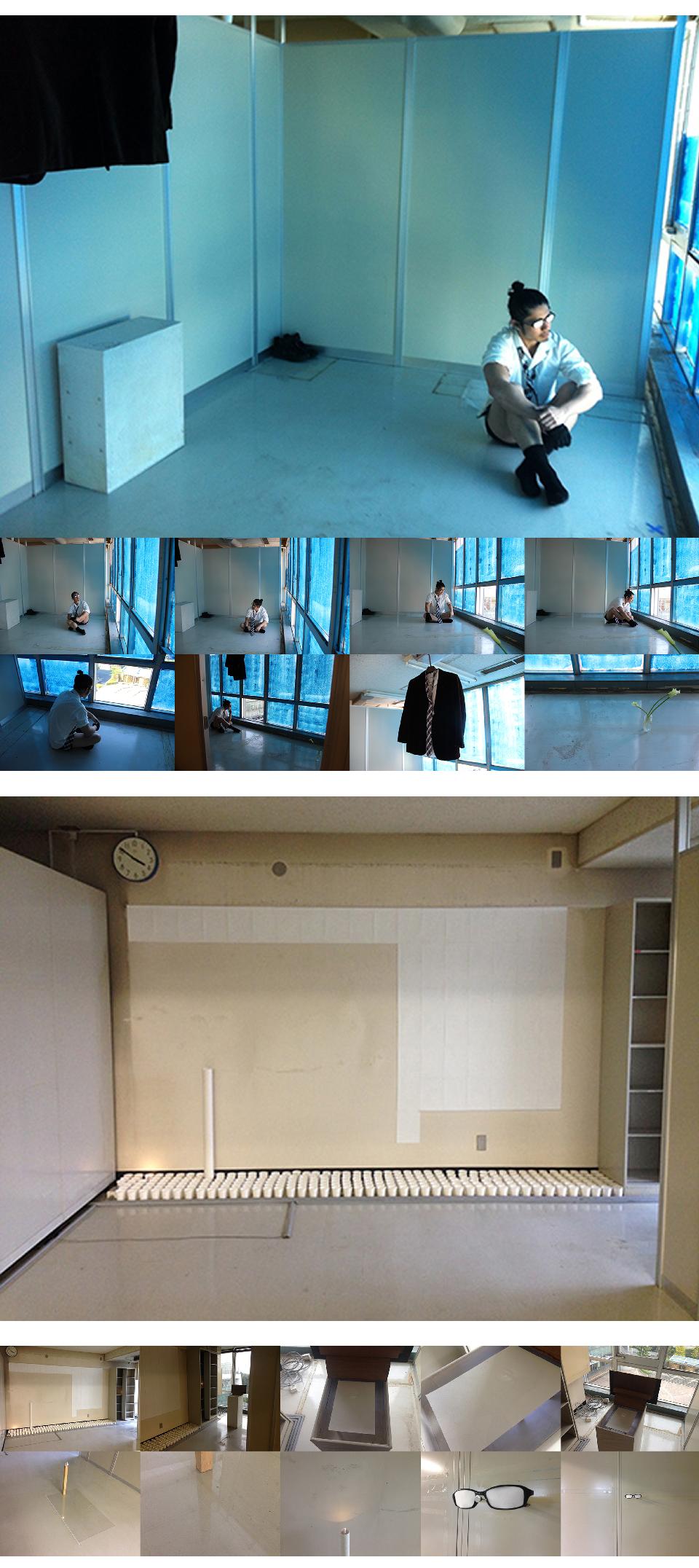What used to be a working hall for Shibuya Cityhall officers was then partially a rendezvous for a figure tirelessly waiting throughout the duration of the exhibition. Situated in an empty room which was previously occupied by the managers, there was a male figure with a set of attires very much similar to the image of a man on Badi magazine's cover. He was Koh Masaki, the late Japan's GV actor who passed away in 2013 after inspiring countless gay men, young and old alike in Asia. The durational performance portrayed an act of waiting as he invited audiences to join him. The bright room expanded the view outdoor, where a clock tower outside became a constant reminder that time never rests. Nothing to be done is a Godotesque durational performance in a site-specific installation that expresses an optimistic farewell to Shibuya Cityhall and at the same time proposes a romantic reminiscence of Koh.
Outside the room was a series of scrubbings of Koh's portraits on paper which appeared invincible from afar. Nearby, several lights lured the audience as they discovered one sheet lighted, projecting Koh's image vividly. Accompanying this were installations of paper cups, a sculptural collage of paper and glasses and found objects remnants of the working hall. Both the installation and performance were derived from Koh's 2012 interview in which he was asked of his sexiest body part. His answer was his eyes, which is called mata (pronounced as mah-ta) in Bahasa Indonesia. Homonymously, matta (待った) also means waited, a concept which is narratively not foreign to Shibuya and mata (また) is commonly accompanying "see you tomorrow". Combining these contrasting elements together, the installation performance work provided a new non-linear narrative that can be experienced through various spectacles. This includes the artist's personal relationship with his amblyopia, the influence of Japanese gay icons to queer community in Asia, masculine context and connotation of the architecture (and the room) itself as well as opening up non foreordained future after a farewell.
